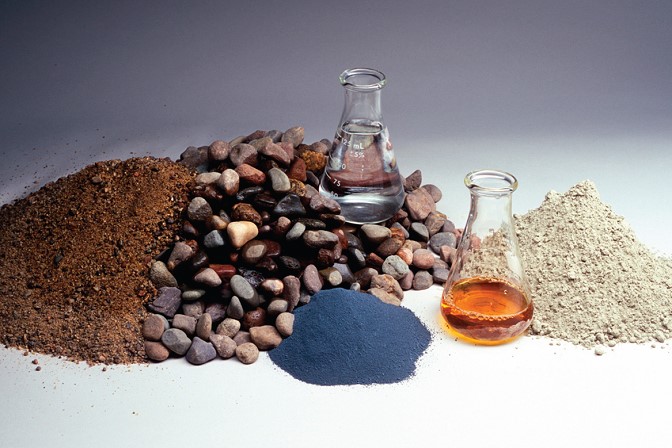Posted on February 04, 2021
Concrete domes have been around for more than half-a-century. In general, they are very strong and aesthetically attractive. For decades, they’ve been used for everything from housing to storage.
However, traditional formwork for curved concrete shells is expensive and time-consuming. Inflatable concrete eliminates the need for such formwork. Inflatable concrete is yet another industry innovation.

Inflatable Concrete: The Technology
The secret of inflatable concrete is the bladder. There are two very different approaches. One uses fresh concrete spread out on a deflated bladder. It is then inflated to create a dome of concrete. The other uses pie-shaped panels of hardened concrete assembled on a deflated bladder. Tensioning cables hold the panels in place as the bladder inflates.
Fresh concrete
Many grade school art teachers introduce students to the basic concept. A student would inflate a balloon and cover it with paper mache. The balloon was then deflated, leaving a paper mache shell. It was both lightweight and strong.
In the 1960s, architect Dante Bini applied the concept to concrete dome construction. His process involved an inflatable bladder, rebar and fresh concrete. The “Binishell” process begins with a deflated bladder on the ground. Next, the crew constructs a wooden form around the perimeter. Finally, the rebar is set in place. Crews place concrete over the top of the bladder, and it is inflated.
Reportedly, it is possible to raise the concrete dome in less than one hour using a modest PSI.
Prefabricated panels
There's another approach that uses pre-hardened concrete panels. A story in Building Design + Construction details the work of a team at Austria’s Vienna Institute of Technology. They developed a news means of fabricating a concrete dome. Crews use an inflatable air cushion, prefabricated concrete slabs and adjustable steel cables. By eliminating traditional timber supports, the new technique cuts construction costs in half.
Dr. Benjamin Kromoser and Professor Johann Kollegger call their process "Pneumatic Forming of Hardened Concrete” (PFHC). Workers position wedge-shaped concrete slabs atop an inflatable bladder. The bladder is gradually inflated. The team adjusts tensioning cables to push the slabs together. The structure rises in the middle.
For their demonstration project, researchers selected a more complex, elongated shape. They wanted to prove just how flexible the method is. The prototype structure took only two hours to inflate to a height of 9.5 feet. Prof. Kollegger suggests that “Building shells with a diameter of 50 meters is no problem with this technique.” The structure is like a snail’s shell - thin but strong. Such concrete domes resist compressive forces as high as 4,000-10,000 psi.
Advantages of Inflatable Concrete
Once trained crews complete preparation and setup, fabrication is fast and non-labor-intensive. Researchers say, “The process will significantly reduce construction times, costs, and labor. It will most likely be used to construct animal crossings, overpasses, as well as many other architectural designs.”
The applications are only limited by the imagination. It is possible that diverse inflatable concrete projects will appear. Sports facilities, military installations, upscale homes and storm shelters are all possibilities.
Domed houses
During the past half-century, the “Binishell” concept has been replicated around the world. To date, there are more than 1600 domed homes in 23 countries. Crews constructed these bungalow-style homes for as little as $3,500.
Decades-old concrete dome homes withstood the test of time. Dante Bini’s son Nicolo cites a concrete dome home near Italy’s Mount Etna. It withstood everything from wind to volcanic ash for more than half-a-century. Nicolo Bini stresses both the environmental and humanitarian benefits of inflatable concrete domes.
Tunnels and overpasses
Tunnels and overpasses are also possible. After the bladder is inflated, the concrete hardens. The bladder is then deflated and removed. The ends of an elongated dome are cut away, leaving a free-standing arch suitable for use as a tunnel or an overpass. Austrian Federal Railways commissioned just such a project. An arch over high-speed rail tracks will provide safe passage for deer in the area. It will be built in the Austrian state of Carinthia.
Recreational applications
When inflatable concrete domes are large enough, potential applications expand. Ice rinks, high school gyms and sport practice facilities are possibilities. Such projects need two things a concrete dome can offer: an unobstructed interior and wind resistance. The dome shape naturally deflects high winds.
Storage of bulk materials
Another possible application is to house and protect the sand and salt spread on slippery roads. Proper storage prevents lumpy salt. It also reduces salt loss from runoff and eliminates environmental contamination.
Concrete is ideal for storing a corrosive material like salt. Open interiors allow free movement of front-end loaders and trucks. Canada Salt estimates that a 150-ft-diameter dome stores as much as 19,000 tons of bulk salt. Gypsum storage is another potential application for inflatable concrete domes.
The Future of Inflatable Concrete: Key Questions
Concrete construction methods evolve as they compete with one another. A key question is, “Will inflatable concrete be economical enough to compete?” When it does prove more economical, designers, engineers and builders will embrace it.
Another question for the future is, “How big can inflatable concrete structures get?” The larger the concrete shell, the greater the possible applications.
Learn More
SpecifyConcrete.org is a website of the Pennsylvania Aggregates and Concrete Association (PACA). Our team stands ready to help you with information about the latest innovations and developments in the industry. For more information, please contact us today.
